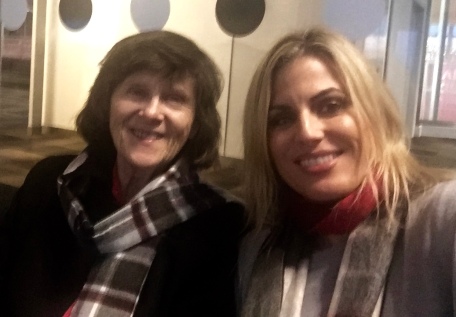Stockholm makes frequent appearances on best-Christmas-market lists, and rightly so. Part of the Scandinavian peninsula, Sweden’s capital city is just 2.5 hours from London. The City of Stockholm floats on fourteen islands where Lake Mälaren meets the Baltic Sea.
My Top Five Stockholm:
Skansen — A vast open-air museum showcasing Swedish life and culture through the ages. Some attractions include 150 historical buildings, botanical gardens, fairgrounds, animal habitats, restaurants and shops, festival stages and in December a Christmas market.
Stadshuset (City Hall) — Take a stroll in the courtyard and gardens, and gaze at the symbolic three golden crowns (Tre Kronor) atop the Tower; climb to the top for stunning old-city views. A guided-tour is only way to visit the interior rooms of the imposing red-bricked landmark to see the Golden Hall, Prince’s Gallery and the Blue Hall which is the venue for the Nobel Prize banquet. Stadshuskällaren, the cellar restaurant, serves classic Swedish dishes.
Gamla Stan (Old Town) — Comprised of four islands, amble along medieval cobblestone streets, chock-full of beautiful old buildings, churches, boutiques and galleries. Try to find Mårten Trotzigs Gränd, the city’s narrowest street, a mere 90 cm (35 inches). On to the Royal Palace for changing of the Royal Guard; do see the Royal Chapel and ornate Royal Apartments displaying jewelled treasures, tapestries, paintings and furniture. Don’t miss the Houses of Parliament and Nobel Museum. Final stop, Stortorget (Old Square) has a traditional Christmas market; warm-up with a kanelbulle (cinnamon bun) and some glögg (mulled wine).
Drottningholm Palace — On the outskirts of the city, this palace is a UNESCO World Heritage Site and the permanent residence of the royal family. The stunning grounds and royal rooms are open to the public. From May to October, you can arrive via steamship departing from Stadshusbron (City Hall Bridge).
Stockholm Archipelago (Skärgård) — Around 30,000 islands and islets are best enjoyed like a true Stockholm-er in summer for boating, kayaking hiking and camping.
Where to Stay: If you can, reserve a room at the luxurious Grand Hôtel Stockholm, centrally located, perfectly situated on the waterfront. After a day in the city, unwind at the Spa, a Nordic Bath complete with plunge pool or ice bucket shower – to boost your immune system, a steam sauna with stone reclining-benches and granite footstools, a waterfall jacuzzi and a cozy fireplace in the relaxation room. Have a drink at Cadier Bar or savour a Michelin-starred dinner at Mathias Dahlgren’s Matbaren or Matsalen; the food is divine. Nobel Prize winners (laureates) always stay at the Grand Hotel, and on December 10th the lobby is filled with very intelligent men and women in gowns, tails and sashes.
Nobel Day – 10th of December
The Nobel Prize is the legacy of Sweden’s Alfred Nobel, a chemist, engineer, inventor and entrepreneur who was born on 21 October 1833 and died on 10 December 1896. On Nobel Day in Sweden and Norway, prizes are awarded to “those who, during the preceding year, shall have conferred the greatest benefit on mankind.” In the Stockholm Concert Hall, Nobel Prizes are awarded in Physics, Chemistry, Physiology or Medicine, and Literature; the ceremony is followed by a gala banquet at City Hall. The Nobel Peace Prize is awarded in Oslo City Hall.
Walking near the hotel on a bitingly-chilly morning, I was mentally contemplating the rest of the day’s program, working out timings and considering dinner options; my intention was to seek input on the choices.
Me [absent-mindedly]: Do you want to…. Do you want to…. Do you want to….
Mother: Do you want to… finish that sentence?!
God Jul (Merry Christmas)! #Sweden



































